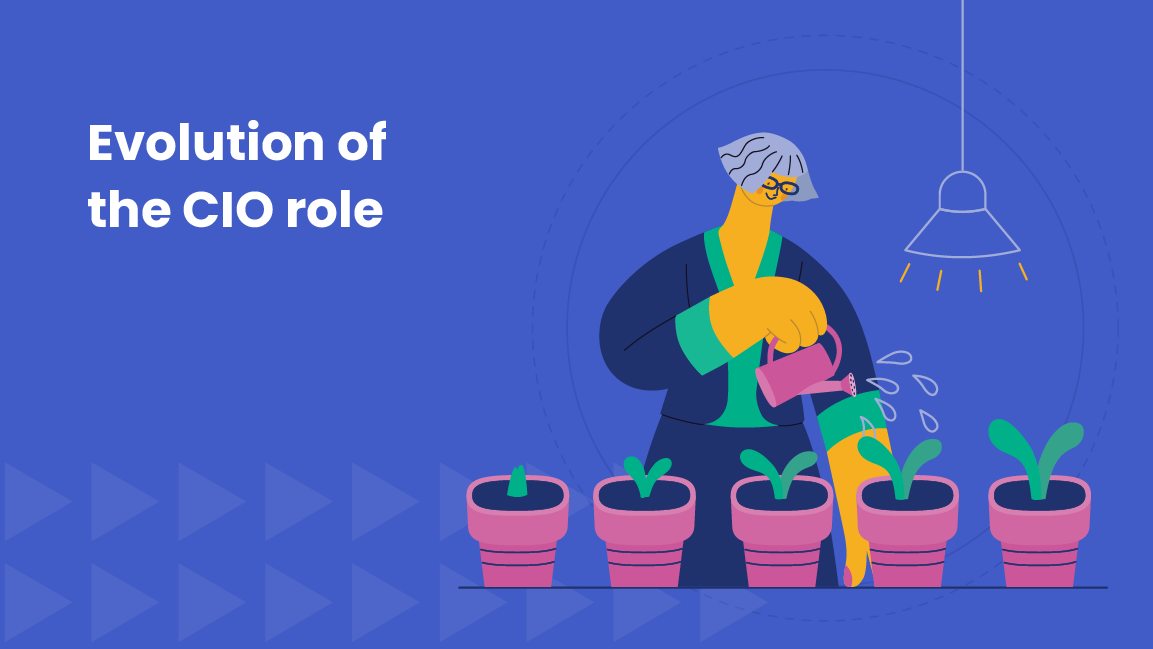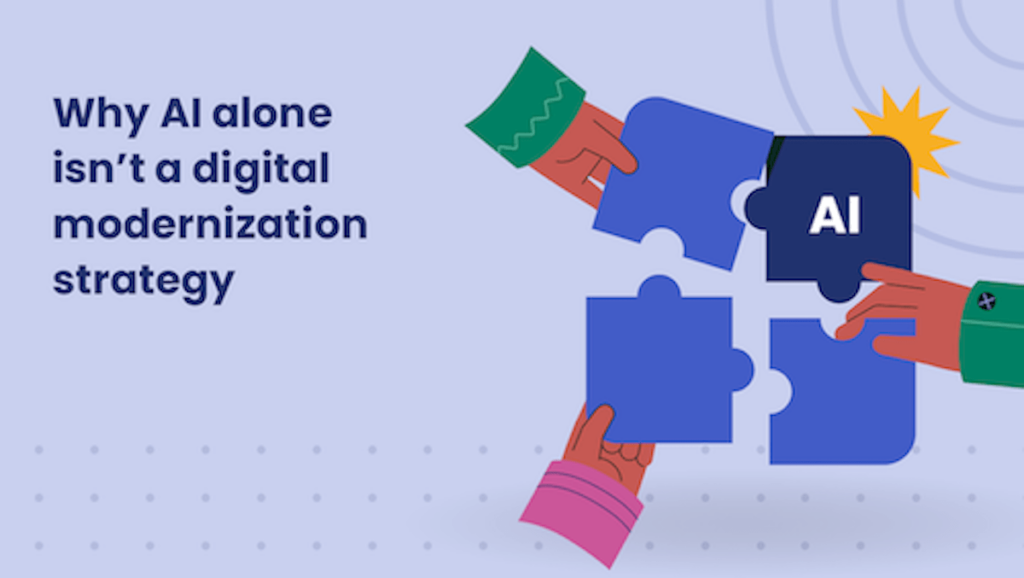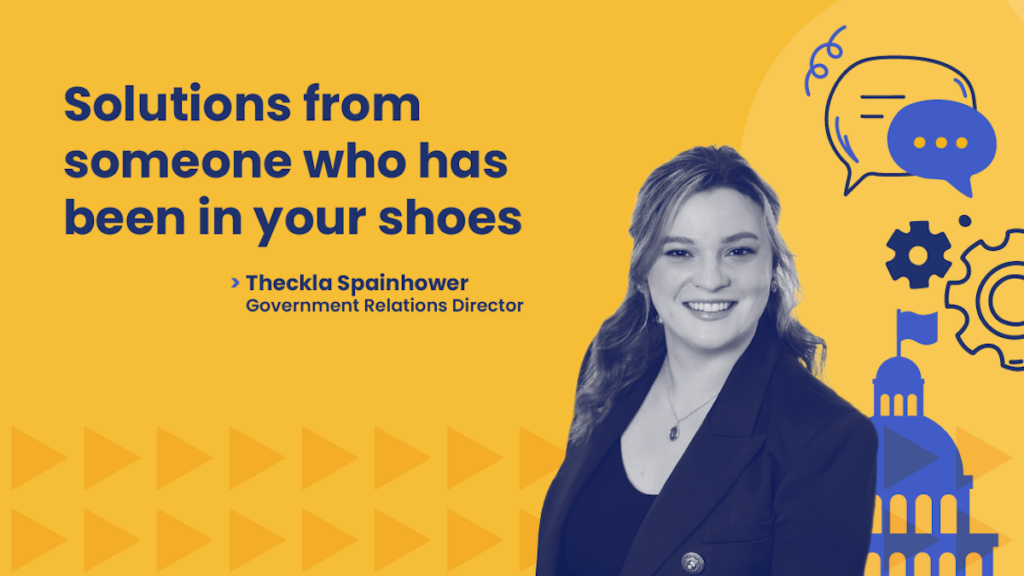The CIO role is changing. Here’s how.

It’s time to let go of the mindset that CIOs are senior-level developers who don’t understand business. While CIOs were once considered IT managers, that’s no longer true. As the technology landscape has changed, so has the role of the CIO.
Evolution of the CIO role
In the past, CIOs were largely responsible for on-site IT maintenance, programming, and standardizing tech within a government agency. CIOs are now key leadership team members — combining business know-how and technical strategy to harness new tech for the organization.
Here’s how CIOs are leveraging technology and their team to influence digital government service delivery and organizational goals:
1. Translate technical ideas into business language
The ability to communicate the value of software and new technologies is a must for CIOs. Along with assessing and understanding new tech, CIOs must be able to succinctly describe long-term value to executives and explain the mechanics (and other intricacies) to staff.
For example, many CIOs are exploring SaaS vendors to partner with and if AI can safely be incorporated into their workflow. That means developing a deep understanding of:
- Tech solutions on the market
- How it helps (or hurts) productivity
- If it solves a pain point or is just a shiny new tool
- Financial considerations
CIOs then must parse the information, deliver technical findings in plain language, and dig into ROI for the business — more executive tech strategy than hands-on coding.
2. Manage tech stacks
Yes, part of the job is managing the tech stack, but that means something different these days. It’s not all on-prem tech. Current tech stacks are being constantly assessed, pruned, and updated. CIOs are managing cloud architecture strategies, integrations, and more — with both optimizing current tech and innovating with emerging technologies in mind.
Helping organizations transition toward SaaS
With tight budgets, innovation demands, and compliance regulations, partnering with SaaS vendors is an attractive option for governments wanting to provide digital services. CIOs involved in evaluating and selecting SaaS solutions are in a better position to minimize unnecessary SaaS sprawl — setting up the agency for success and providing residents with the 21st-century experiences they are looking for.
Explore, understand, and educate on AI
CIOs have a heavy load with emerging technology — especially AI. And this isn’t about having years of AI expertise or developing an AI model. As government technology strategists, CIOs:
- Evaluate and communicate possible impacts on workflow or the workforce
- Discern between actual capabilities and hype
- Assess how it can (or can’t) positively impact the agency’s business model
That could mean CIOs are setting up internal policies on AI use, or perhaps they’re recommending where and how AI can be incorporated into existing practices or tools.
3. Navigate changing workplace conditions
The culture of public service work is changing as quickly as technology — pushing the evolution of the CIO role. Unlikely as it may seem, CIOs are at the center of navigating this shift; they’re dealing with a public sector talent shortage and new work models (remote and hybrid positions).
Technology can help balance and relieve short-staffed teams and connect a distributed workforce. CIOs are better positioned than other executive team members to ensure that the agency’s tech positively affects workflow, team efficiency, and morale.
4. Foster agency-wide ability to adapt to change
Innovation requires change — sometimes at a quicker pace than some people are comfortable with. Part of the evolution of the CIO role means taking charge of future-proofing digital government services. Today’s CIOs aren’t only government change agents, they’re modeling a thoughtful, forward-thinking approach to tech advancements in the department. Ideally, this helps foster behavioral and mindset change for staff and encourages the executive team to push forward with modernization goals.
5. Risk management
The same software that drives innovation can also lead to data breaches and compliance issues. Security now involves vetting cloud providers and SaaS vendors, analyzing protocol, and contingency planning. Along with the agency’s cybersecurity team, the CIO has to:
- Recommend best practices
- Conduct third-party risk assessments
- Ensure compliance
- Set contingency plans
- Put real-time monitoring in place
And as part of the executive team, CIOs communicate best practices to the other business leaders and agency staff. Risk management will continue to be a consistent, high-priority part of the CIO role.
CIO of the future: Technology champion and executive leader
Sounds like a lot to manage, right? CIOs are technology visionaries, tech strategists, culture shepherds, and business leaders — that’s a heck of an evolution for CIO roles.
Here are just a few of the tasks that fall to the CIO:
- IT strategy
- Using technology to create value
- Vetting tech partners and buying solutions
- Balancing tech tools with staffing
- Digital service innovation
- Responding to emerging tech (and corresponding resident demands)
And as new technologies emerge, CIOs will become even more critical to government operations. There will be more data, SaaS options, and risks that CIOs will have to navigate — not to mention a growing technology spend.
The evolution of the CIO role makes it clear: We’re shifting toward a new era of digital government. Government agencies will continue to trend digital-first to satisfy resident demands and drive internal efficiency.
Looking for more content?
Get articles and insights from our monthly newsletter.




